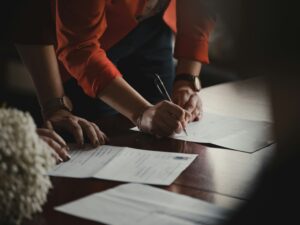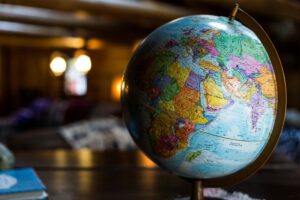LMK and LMKN: Role and Function Explained
With the rampant number of music copyright disputes recently, National Collective Management Organization (LMKN) and the Collective Management Organizations (LMK) have found themselves in the spotlight. The situation has escalated to the point where the Minister of Law Supratman Andi Agtas, has called for an audit of the organizations following ongoing controversies over royalty payments– citing the need for greater transparency in royalty distribution and management, particularly due to the recent disputes involving various musicians and songwriters.
In light of these issues, we believe it’s important to discuss the roles and responsibilities of both LMK and LMKN. Regardless of whether the current controversy leads to structural or regulatory changes, this is essential information for stakeholders to understand, especially if your work involved copyrighted music.
Below is a basic breakdown of LMK and LMKN, and how they function within Indonesia’s royalty management ecosystem.
Definition
LMK, or Lembaga Manajemen Kolektif (Collective Management Organization), is defined by Article 1 Paragraph 22 of the Indonesian Copyright Law (UU No 28/2014) as an institution of a non-profit legal entity that is authorized by the Creator, the Copyright Holder, and/or Related Rights owner to manage their economic rights in the form of collecting and distributing royalties. Meanwhile, LMKN or Lembaga Manajemen Kolektif Nasional is a government-supported, non-APBN (non-state budget funded) institution established by the Minister of Law and Human Rights under the Copyright Law. It has the authority to collect, gather, and distribute royalties and manage the economic rights interests of creators and related rights holders in the fields of songs and/or music, as regulated by Article 1 Paragraph 11 of Government Regulation No. 56/2021 (Peraturan Pemerintah 56/2021). As stipulated in Article 89 Paragraph 1 of Law No. 28/2014 LMKN is divided into two branches, namely LMKN for Creators and LMKN for Related Rights Owners, each led by independent commissioners responsible to the Minister.
Both LMK and LMKN are involved in the management of music royalties in Indonesia, however they serve different roles. LMKs are nonprofit legal entities formed by creators or rights owners to manage their economic rights—specifically the collection and distribution of royalties on behalf of their members. Notable examples include WAMI (Wahana Musik Indonesia), KCI (Karya Cipta Indonesia), ARDI (Artis, Pemusik, Pencipta Lagu dan Penata Musik Rekaman Indonesia), and RAI (Royalti Anugerah Indonesia). Meanwhile, LMKN is a national body established under the Copyright Law to oversee the broader royalty system. It is responsible oversees the royalty system as a whole and coordinating with LMKs for distribution. To summarize, LMK serves the creators and rights holders, while LMKN manages the system.
Royalty Collecting
According to Government Regulation No. 56/2021, anyone engaging in commercial use of songs and/or music within public services that are commercially oriented must pay royalties through LMKN. Such commercial public services include but are not limited to: restaurants, bars, commercials, cinemas, public transports etc
Furthermore, according to Article 1 of PP 56/2021, the process of royalty management can be broken down into three essential categories:
- Collection
LMKN collects royalties from users engaging in commercial usage of songs/music on behalf of creators, copyright holders, and related rights owners who are either members of an LMK or not. Article 12 Paragraphs (1) and (2) of PP 56/2021 stipulated that LMKN collects royalties both for LMK members and for non-members.
According to Article 4 of Ministry Regulation No. 27 of 2025 (Permenkumham 27/2025), LMKN is responsible for overseeing royalty collection from commercial public services, both analog and digital, which includes monitoring and managing royalty obligations from users of copyrighted music in various commercial formats.
2. Accumulation
LMKN accumulates the royalties, coordinates with LMKs, and determines the amounts owed to each LMK based on fairness and customary practice, as stipulated in Article 13 of PP 56/2021.
As stipulated by Article 24 Permenkumham 27/2025, all collected royalties must be aggregated through a single bank account under LMKN (or per each LMKN), which must be accessible to all LMKs. This centralized approach ensures transparency and traceability of funds.
3. Distribution
Royalty distribution is stipulated by Article 14 of PP 56/2021. Collected royalties are distributed to members of LMKs, operational costs, and reserve funds. Distribution relies on data from the Sistem Informasi Lagu/Musik (SILM), an integrated central data system on songs and music usage.
According to Article 27(1) and (3) of Permenkumham 27/2025, LMKN distributes royalties to rights holders who are LMK members through their respective LMKs. For non-members, LMKN handles the distribution directly, based on claims and verified data by the relevant LMKN.
Moreover, LMK calculates royalty amounts based on user data and must notify LMKN at least twice annually. Notifications include the total amount distributed, recipients, and user data broken down by service type. Lastly, in cases of disputes over royalty distribution, creators and rights holders may request dispute resolution from LMKN through alternative dispute mechanisms outside court proceedings, as is stipulated in Article 28 (4)of Permenkumham 27/2025.
Conclusion
Regardless of the potential changes in the royalty system in Indonesia or perhaps even Copyright Law as a whole, it always important to keep up to date with latest information regarding copyright. This rings especially true if your industry is heavily involved with copyrighted material. A comprehensive knowledge of copyright would not only save you from potential problems, but could also help you maximize the value of your work as well.
Should you have any questions regarding this issue or any other IP related inquiries, contact us at ambadar@ambadar.co.id. Our team of highly qualified professionals are more than ready to assist you.
Sources:
- Law No. 28 of 2014 on Copyright
- Government Regulation No. 56 of 2021 on Management of Royalties for Song and/or Music Copyrights
- Ministry of Law Regulation No. 27 of 2025 on Implementation of Government Regulation No. 56 of 2021






